“The man who comes back through the Door in the Wall will never be quite the same as the man who went out.” (Aldous Huxley, 1988)
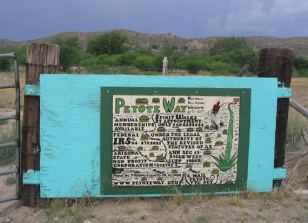
It wasn’t that I had prior experience with psychedelics; it was more a matter of a midlife crisis that led me to test out something different. Some people mark their 40’s with things like exotic travel, experiences with S&M, love affairs, plastic surgery, or a risky career change. I decided to mark mine with a peyote trip.
I discovered the Peyote Way Church by accident when a Phoenix New Times thumbnail popped up on my Facebook newsfeed one afternoon. The article detailed a story about Reverend Matt, and Rabbi Annie, of the Peyote Way Church, neither of which were formally ordained by any organized theological body.
The Peyote Way Church is the oldest non-Native American Church in the United States that uses peyote as sacrament. The use of peyote in Colorado, Arizona, Oregon, and New Mexico is not illegal so long as it is performed as a spiritual rite and within the construct of Church practice; that spiritual rite, however, largely resides with Native American Churches who, up until the founding of Peyote Way Church, were the only legally recognized entity permitted to use the sacrament.
Matt and Annie were nomad-seekers turned mystics who had settled in Arizona’s Aravaipa Canyon with a Native American sage named Immanuel Trujillo, some forty years ago. Trujillo, who died in 2010 and was buried on the property, left Matt and Annie as the Church stewards, and to carry on the peyote legacy.
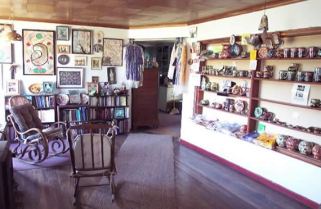
After learning what I could online, I contacted the Church and scheduled a Walk for March. The Church was not the traditional steeple and bell tower found in the American Midwest; instead, it was similar to a European hostel or a minimalist bed and breakfast with an overtly artistic American Southwestern flair. The only difference was that this was the unforgiving American Southwest and the notion of flair could only be found in the barren expansiveness that marked the Church grounds.
Inside the Church, the shelves were lined with handmade pottery from the Mana Art studio; the walls were decorated with photographs of Trujillo and eclectic paintings that spanned three generations of Peyote Way (PW) fellowship. The simplicity was humbling and I could not help but think these people knew more about how to live, truly live, than those of us tethered to laptops, smartphones, and the latest app.
“We make these things because art is our livelihood,” said Matt. “And it also gives the materialists who come here something to grab hold of and carry back home.”
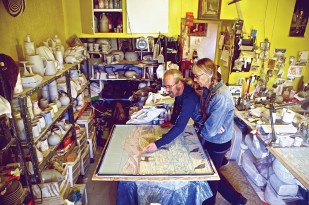
I wondered if the comment was meant to deter a purchase of art or to inspire one. I knew that pieces of Mana Pottery were part of the permanent collection in the Smithsonian Institute Museum of the American Indian in Washington, DC.
“A lot of people come here uptight about things and what they think might happen out there in the desert,” said Matt. “But everybody is mellow the day after their Walk.”
I imagined so.
******
The next morning I rose early to prep my campsite. The Walks started around noon and I wanted to get settled beforehand. While I was prepping the tent, Matt came by and I helped him unload cottonwood from his truck. We chatted in between armloads and I learned that Matt had been a conscientious objector during the Vietnam War.
“I left here because of it,” he said. “I went to India and traveled around with gurus, then some monks. Ended up making my way across a few countries and came back to the States after the war.”
Matt pushed his fanny pack back and picked a few larger logs of wood out of the stack and chopped them into smaller pieces.
“I’ve spirit walked many times over the years,” he said, “and every single time it’s different. Just go into it open-minded and see what the medicine has to say.”
I went back to the house and waited for Annie to bring out the sacrament.
“This is the hero’s dose,” she said and handed me the sacrament bottle. The bottle was warm and chunks of cacti floated near the top. “This,” she said and pointed to the halfway point, “is enough for an amazing experience. And the hero’s dose. . .” she smiled and paused, “well, it’s life-changing. Take a little sip every twenty to thirty minutes. I always tell people to resist the urge to throw-up. The mescaline comes on really slow, so just sit back in the chair and let it happen.”
I thanked her and took the bottle back to the campsite, determined to do the full dose.
******
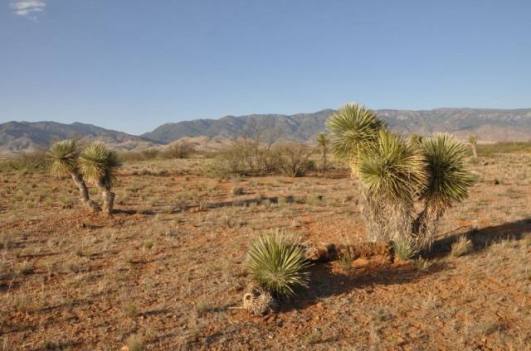
I tried to keep a journal of my experience, but writing, naming, and recording seemed pointless after the fourth sip. At some point, probably six hours into the experience, the trees transformed into mother’s arms; the bark and scrub brush seemed to watch me; a felled log on the hilltop above my campsite pushed itself up from the ground, as though coming alive after a long rest. The Arizona flag that stood next to the log flapped in the wind, playing the same song as a roaring campfire.
The visual hallucinations intensified at nightfall against the backdrop of the endless canyon sky. It was the perfect canvas for Horus, Ishtar, and gods from cultures far older than the Judeo-Christian one I’d been raised in. Hohokam ancients, shamans, and entities from Hinduism, Buddhism, and mystery cults lit up the blackness. Around the campfire I heard invisible children singing “Ooheeaaatah, o e o e ahh tay” over and over.
The desert floor teemed with life and against the chorus of coyotes and owls, the land felt more vibrant now that it ever had during the daytime. I watched the sky for several hours until the hallucinations lost their appeal, rather, until one image stamped itself over another and all of them folded into the next.
When I went inside my tent it was like crossing a threshold where time ceased to exist. Let me be clearer about this. Time didn’t stop, per se, it simply Did Not Exist. There was no slowing or speeding up, only a total realization and acceptance that time is an illusion. Black ran into black, light into light, second into second, and there was no indication of a felt past or felt future, only a Right Now.
Hundreds of other entities joined me inside the tent, each one cramped into the sleeping bag.
“Why are there so many of you?” I yelled. All of them, I presume, were aspects of myself: the studious one, the fearful old woman, the abandoned child, the girl who tries too hard to impress, and many more, some of whom I’d never seen up close, others that I’d tried for years to ignore.
I put my fingers to my lips and whispered, “I release you.” I exhaled and released past lovers, personal failures, and the biological father who gave me up for adoption as a child. I released the shame I’d always felt for growing up poor and the shame I felt for not being good enough. All of it became nonsense and illusion and I set it free. The lovers and the biological father and the kids who taunted me as a child came eye to eye with me and I smiled at them, wished them freedom from suffering, and I wished them peace. Completely.
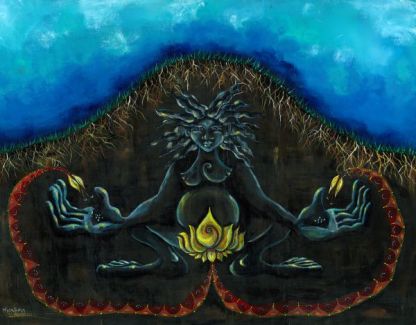
So much more happened that night. . .too much. All of it played out in a layer of my consciousness only ever glimpsed during times of deep meditation. That layer is the place where heaven is a condition and the realization that all of us are One is a truth; it isn’t a place we can easily see in the mundane world. At least it isn’t always easy for me to see. The existence of war, corruption, and injustice in this world tells me that very few people out there, even if they have touched that Unity, have difficulty maintaining it. But, maybe at some point we can maintain it. Maybe.
I don’t think peyote is the answer to a better world, perhaps just a pathway to deeper understanding and consciousness. A Zen teacher once told me, “Don’t mistake the finger for the moon,” and I think the same concept applies here. Peyote, and other sacraments and contemplative practices, certainly hold the potential for opening us up to that place where Unity is realized.
And peyote insights, like those derived from deep meditation, are experiences that, in many ways, are beyond words, something that must be felt apart from the confines of conceptual thought in order to be understood and appreciated. Insights must be experienced and they are often unexplainable. As Lao Tzu wrote, “The Tao that can be spoken is not the eternal Tao.”
It probably isn’t. Either way, I release you.
–by Vikara, Blog Manager

“Why are there so many of you?”… hehehe..! Why indeed..! & this Time thing sure does need some figuring. Thanks for sharing.
LikeLiked by 1 person
“Time can be envisioned as a space-like dimension, forming a block universe that includes personal worldline threads that are frozen and unchanging, and are shaped like snakes. Each snake or thread represents a person’s entire subjective stream of thoughts during their entire life. Analytic philosophy and space-time physics have been brought together to construct a tenseless, static model of time. This perspective is characteristic of altered-state perception.” ~ http://www.egodeath.com/mobile3.htm (as a sort of a parallel to your experience of time not existing…) ~pie~
LikeLiked by 1 person
Very nice! Have you also experienced this altered perception? I’d love to hear about it.
LikeLiked by 1 person
I have indeed, I wrote an entry about it called the death of time, which is an old private entry for now, I think that experience involved a generous dose of ‘shrooms. For now I’m content to let the experience inspire research… That link I shared before is where my research led me.
LikeLiked by 1 person
Same for me. I’m more interested in conducting research these days.
LikeLiked by 1 person